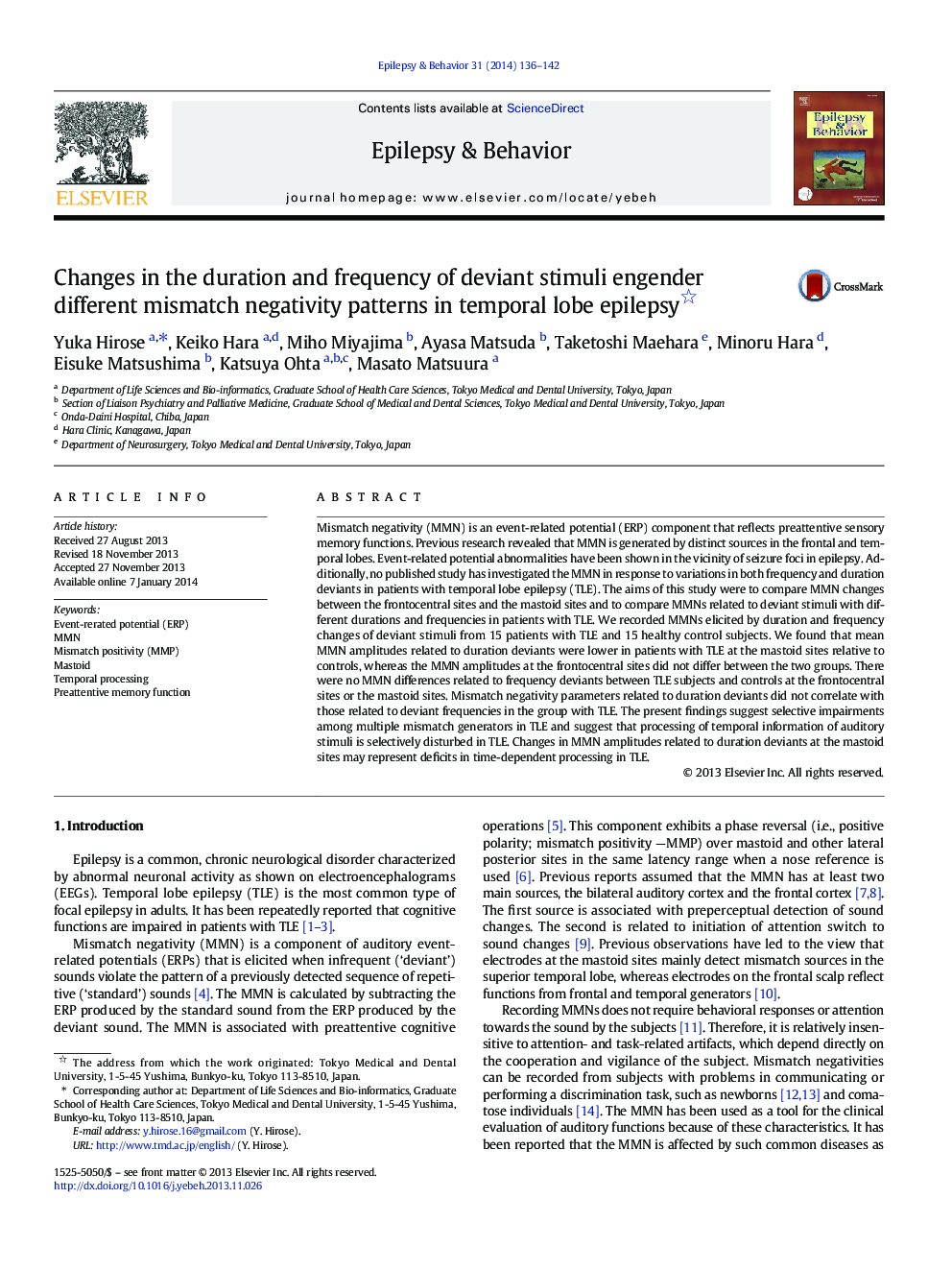| Article ID | Journal | Published Year | Pages | File Type |
|---|---|---|---|---|
| 6012546 | Epilepsy & Behavior | 2014 | 7 Pages |
Abstract
Mismatch negativity (MMN) is an event-related potential (ERP) component that reflects preattentive sensory memory functions. Previous research revealed that MMN is generated by distinct sources in the frontal and temporal lobes. Event-related potential abnormalities have been shown in the vicinity of seizure foci in epilepsy. Additionally, no published study has investigated the MMN in response to variations in both frequency and duration deviants in patients with temporal lobe epilepsy (TLE). The aims of this study were to compare MMN changes between the frontocentral sites and the mastoid sites and to compare MMNs related to deviant stimuli with different durations and frequencies in patients with TLE. We recorded MMNs elicited by duration and frequency changes of deviant stimuli from 15 patients with TLE and 15 healthy control subjects. We found that mean MMN amplitudes related to duration deviants were lower in patients with TLE at the mastoid sites relative to controls, whereas the MMN amplitudes at the frontocentral sites did not differ between the two groups. There were no MMN differences related to frequency deviants between TLE subjects and controls at the frontocentral sites or the mastoid sites. Mismatch negativity parameters related to duration deviants did not correlate with those related to deviant frequencies in the group with TLE. The present findings suggest selective impairments among multiple mismatch generators in TLE and suggest that processing of temporal information of auditory stimuli is selectively disturbed in TLE. Changes in MMN amplitudes related to duration deviants at the mastoid sites may represent deficits in time-dependent processing in TLE.
Keywords
Related Topics
Life Sciences
Neuroscience
Behavioral Neuroscience
Authors
Yuka Hirose, Keiko Hara, Miho Miyajima, Ayasa Matsuda, Taketoshi Maehara, Minoru Hara, Eisuke Matsushima, Katsuya Ohta, Masato Matsuura,
